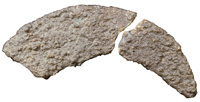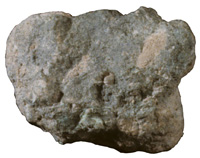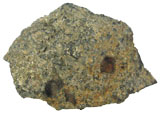
The Ban Chiang Project - Metals Database

About this web site
This page briefly describes the metal and metal-related artifacts from the prehistoric sites of Ban Chiang, Ban Phak Top, Ban Tong, and Don Klang in northeast Thailand, and provides summary tables of metal artifacts and Ban Chiang chronology as well as access to metals-related data from these four sites.
The Metals Database presents in a searchable form the provenience and analytical data for all the metal and metal-related (molds, crucibles, and slag) artifacts from these excavations. To access searchable data go to the Metals Database Portal.
To download comma-delimited, Access 2003, or Filemaker Pro 8 versions of metals data to manipulate in your own programs, go to the downloadable databases.

The archaeological sites
The excavations of Ban Chiang (1974 and 1975) and of Non Nok Tha (1966 and 1968), revolutionized the understanding of Southeast Asian prehistory, demonstrating that bronze metallurgy was practiced in a village setting as early as 2000 B.C., over a thousand years earlier than had previously been assumed. Because of its importance in Southeast Asian archaeology, Ban Chiang has been named a World Heritage Site. The three other sites, Ban Phak Top, Ban Tong, and Don Klang, were test-excavated in 1975 by William Schauffler, a University of Pennsylvania PhD student.
Other online resources
- For more about Ban Chiang and the Ban Chiang Project, go to the Ban Chiang web site.
- To access the searchable Southeast Asian Archaeological Bibliography (about 15,000 references), go to the Bibliography.
- For downloadable files of Ban Chiang skeletal data, go to skeletal data.
The Artifacts
The Metal artifacts from the four sites were classified into nine groups. Metal-related artifacts were classified into three groups. To see summary tables showing the data about kind of metal, period, and context for artifacts in each artifact class, click on the image for each class. To see all the database information for each class, click on the Browse Database link. To see the gallery images for each artifact class, click on View Gallery.

Bangles
Bangles, including rings, bracelets, anklets, and solid necklaces.

Adzes / Tillers
Adzes/tillers. All examples are socketed.

Blades
Blades, both socketed and tanged.

Points
Points, both socketed and tanged.

Bells
Bells, most of which were small and designed to slip over a bangle or cord.

Wires / Rods
Wires/rods: straight lengths of metal of unknown function. Some wires are very fine, with diameters of 1mm or less.

Miscellaneous
Miscellaneous artifacts, ranging from hooks to cleft balls.

Flat
Flat pieces, obviously shaped and part of an artifact.

Amorphous
Amorphous pieces. Most were small and were probably the result of accidental splashing during casting or other fabrication procedures.

Crucibles
Crucibles: small ceramic vessels used for smelting or melting metal.

Molds
Molds for casting artifacts. Only a few fragmentary molds were found at the four sites.

Slag
Slag: the siliceous waste product of smelting and melting. It results when non-metallic materials in the ore or metal run off and solidify.
Table 1. Metal Artifacts
| Ban Chiang | Ban Phak Top | Ban Tong | Don Klang | |
|---|---|---|---|---|
|
Late Period
-Protohistoric
|
4 copper-base (Cu)
12 iron (Fe) |
— |
3 Cu
2 Fe |
4 Cu
1 Fe |
|
Late Period
|
66 Cu
52 Fe |
6 Cu
3 Fe |
— |
82 Cu
12 Fe |
|
Middle Period-Late Period
|
37 Cu
15 Fe |
— |
7 Cu
|
— |
|
Middle Period
|
68 Cu
23 Fe 2 bimetallic |
— |
19 Cu
|
— |
|
Early Period-Middle Period
|
50 Cu
1 Fe |
— |
_
|
3 Cu
|
|
Early Period
|
74 Cu
|
9 Cu
|
85 Cu
|
— |
|
Totals
|
296 Cu
105 Fe 2 Cu-Fe |
15 Cu
3 Fe |
114 Cu
2 Fe |
89 Cu
13 Fe |
Table 2. Ban Chiang Chronology
|
Period
|
Burial Phase
|
Working date range
|
|
|---|---|---|---|
| Late Period (LP) | X | c. 300 B.C.-A.D. 200 | |
| IX | |||
| Middle Period (MP) | VIII | c. 900-300 B.C. | |
| VII | |||
| VI | |||
| Early Period (EP) | upper | V | c. 1500-900 B.C. |
| lower | IV | c. 2100-1500 B.C. | |
| III | |||
| II | |||
| I | |||
| Initial Period (occupation before Burial Phase I) | ?-c. 2100 B.C. | ||
